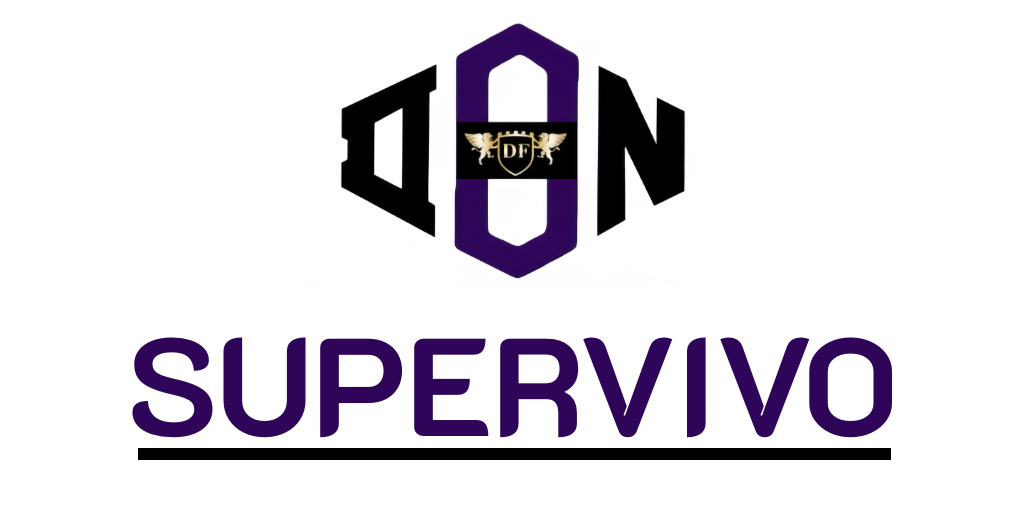A tech stack, often referred to as a technology stack, is the foundation of modern software development, comprising various programming languages, frameworks, and tools used to build and run web applications. Understanding what a tech stack is essential for both businesses and developers, as it dictates performance, scalability, and user experience. Leading tech companies such as Facebook, Twitter, and Airbnb carefully choose their tech stacks to optimise their platforms and deliver seamless interactions. Whether you’re venturing into web development tools or refining your existing projects, grasping the significance of a technology stack can set the stage for your success in the digital landscape.
Understanding the Concept of a Technology Stack
A technology stack serves as the backbone of any digital application, encompassing a unique combination of software tools and programming languages. A successful product relies on a well-defined tech stack that integrates various technologies to fulfil specific functions. This seamless blend of components allows teams to deliver exceptional user experiences, optimising efficiency and performance.
Defining a Tech Stack
To grasp what is a tech stack?, one must consider its two main segments: front-end and back-end technologies. Front-end tools manage the visual aspects of an application, while back-end solutions handle server-side operations. This interconnection allows for fluid collaboration and communication between different parts of the application, creating a coherent user experience.
The Importance of Tech Stacks in Development
The significance of tech stacks extends far beyond simple definitions. They facilitate innovation by providing developers with essential software tools, fostering agility in the development process. By streamlining workflows, a robust tech stack enhances overall project turnaround times, ultimately influencing a product’s market viability. Understanding the intricacies of a technology stack empowers companies to adapt swiftly to changing demands, ensuring they remain competitive.

What Is A Tech Stack?
At the heart of modern software development lies the concept of a technology stack. Understanding what is a tech stack? is crucial for anyone involved in creating digital applications. This term encompasses a variety of tools and technologies that developers use to build and maintain software solutions.
A technology stack typically includes the following layers:
- Front-end technologies: These are responsible for the user interface and user experience, allowing developers to create engaging and interactive designs.
- Back-end technologies: This layer manages the server, database, and application logic, ensuring that everything runs smoothly behind the scenes.
- Databases: Data storage systems that support data retrieval and management for applications.
Several popular tech stacks, such as MERN (MongoDB, Express.js, React, Node.js) and LAMP (Linux, Apache, MySQL, PHP), show how different technologies can come together to create powerful applications. Each component of a technology stack plays a vital role in delivering a seamless experience for users, effectively answering the question, “What is a tech stack?” and highlighting its importance in contemporary development.
Key Components of a Tech Stack
A tech stack comprises various essential components that empower the development of modern applications. Understanding the different layers of this stack is crucial for creating effective solutions, driving both front-end development and back-end development processes.
Front-end Development Tools
The realm of front-end development focuses on how users interact with an application. Tools and technologies such as HTML, CSS, and JavaScript play a pivotal role in crafting visually appealing interfaces. Frameworks like React and Vue.js provide an enhanced development experience, offering reusable components that streamline the design process. This blend not only improves aesthetics but heightens overall user experience.
Back-end Development Solutions
On the back-end, several solutions ensure that application logic runs smoothly. Technologies such as Node.js, Ruby on Rails, and Django manage server operations and data handling efficiently. These tools are indispensable for facilitating seamless data exchange between the server and the client, yielding faster responses and improved functionality in applications.
Programming Languages to Consider
The choice of programming languages significantly influences the capabilities of a tech stack. Languages like Python, Java, and C# offer different strengths and can dramatically affect an application’s performance and scalability. Selecting the right language is essential for future enhancements and overall project success.
The Role of Frameworks in a Tech Stack
Frameworks are essential elements within a tech stack, acting as guiding structures that facilitate both front-end development and back-end development. Their utilisation can lead to more efficient workflows, allowing developers to focus more on creativity rather than foundational coding. Let’s explore some of the popular frameworks that are making waves in these areas.
Popular Front-end Frameworks
In the realm of front-end development, several frameworks have gained prominence. Frameworks like Angular, React, and Vue.js stand out due to their versatility and efficiency. These tools enable developers to create dynamic user interfaces with ease. They provide reusable components that streamline the coding process and improve overall application performance by optimising resource utilisation.
Notable Back-end Frameworks
On the back-end, various frameworks play crucial roles in simplifying complex processes. Express for Node.js, Ruby on Rails for Ruby, and Flask for Python are noteworthy examples. These frameworks assist developers in managing server-side behaviour while simplifying interactions with APIs and databases. They empower developers to rapidly create scalable applications, ensuring adherence to best coding practices and minimising bugs along the way.
Selecting the Right Development Environment
Choosing an appropriate development environment profoundly influences the effectiveness of a tech stack. The right combination of software tools can significantly enhance productivity and streamline the development process.
Essential Development Tools
Key software tools contribute to an efficient development environment. Some essential tools include:
- Integrated Development Environments (IDEs) such as Visual Studio Code, known for its versatility and user-friendly interface.
- Version control systems like Git, enabling collaborative code management and tracking changes effectively.
- Containerisation tools such as Docker, which offer isolated environments for running applications smoothly.
Incorporating these tools empowers developers to manage their code efficiently, fostering increased focus on innovation.
Creating a Collaborative Setting
A collaborative environment serves as the backbone of successful project completion. Employing software tools that encourage teamwork can lead to enhanced communication among team members. Consider the following platforms:
- Slack for real-time messaging and updates, keeping everyone in sync.
- Trello for visual project management, making task assignments clear and trackable.
- JIRA for issue tracking and agile project management, ensuring smooth workflow.
Fostering a collaborative setting ensures that all team members share a unified vision of the project, reducing the likelihood of miscommunication and improving overall efficiency.
Trends in Web Development Tools
The domain of web development tools is experiencing remarkable changes, driven by emerging technologies that continually reshape the way developers create applications. These innovations enhance their effectiveness and elevate user satisfaction, resulting in a more dynamic digital landscape.
Emerging Technologies Shaping the Future
Today’s web development tools are being influenced by a variety of emerging technologies. Essentials like Progressive Web Apps (PWAs), serverless architectures, and microservices are revolutionising how applications are developed. This shift encourages versatility and scalability, empowering developers to meet user expectations with remarkable agility.
Influence of Cloud Services on Tech Stacks
Cloud services play a vital role in modern tech stacks, providing access to on-demand resources that streamline deployment and maintenance. Platforms such as AWS, Google Cloud, and Microsoft Azure offer essential tools for developers, allowing them to focus on their core competencies while utilising powerful infrastructure. The capacity to dynamically scale resources enhances operational efficiency, making cloud solutions indispensable in today’s competitive environment.
How Tech Stacks Enhance Project Efficiency
Tech stacks play a pivotal role in enhancing project efficiency by enabling precise methods of coordination and execution. By adopting a well-structured approach, developers can focus on improving productivity through effective strategies.
Streamlining Workflows
Streamlining workflows is key to achieving smoother project execution. A comprehensive tech stack allows for the automation of tedious tasks, freeing up developers to concentrate on more complex aspects of development. This organisational method not only enhances productivity but also shortens the overall development cycle. Tools such as project management software can assist teams in managing timelines and workloads effectively.
Integrating Tools for Better Results
Integrating tools into the tech stack fosters better results in various project stages. Continuous integration and continuous deployment (CI/CD) practices, employing tools like Jenkins and CircleCI, ensure that updates are reliably tested and deployed with minimal disruption. This level of integration reduces error likelihood and expedites the release process, thus contributing significantly to project efficiency. Such methodologies promote collaborative environments where teams can thrive and innovate.
The Future of Tech Stacks in Software Development
The landscape of technology is evolving rapidly, leading to transformative changes in the future of tech stacks. Anticipated innovations are set to reshape the way developers approach software development, presenting both exciting opportunities and notable challenges.
Predicted Trends and Innovations
Emerging trends indicate a stronger shift towards low-code and no-code platforms. These tools empower non-technical users to contribute to application creation, significantly broadening the talent pool. Concurrently, the integration of artificial intelligence and machine learning within tech stacks is expected to enhance user experience by automating decisions based on profound behavioural insights. This shift will likely lead to a more personalised interaction between users and applications, paving the way for innovative software solutions.
Challenges Developers May Face
Despite these advancements, developers will encounter a series of challenges. The fast-paced nature of tech necessitates that they stay abreast of the latest frameworks and tools, requiring continuous learning and adaptation. Security concerns will become increasingly pertinent, as protecting user data against emerging threats will demand innovative strategies. Balancing the introduction of cutting-edge technologies with traditional methodologies will be vital to ensure robust software development in this evolving landscape.
Case Studies of Successful Tech Stacks
Analysing case studies of successful tech stacks provides invaluable insights into the effectiveness of specific technology combinations in real-world applications. For instance, Airbnb has gained remarkable success by employing a tech stack that integrates Ruby on Rails for back-end development and React for front-end solutions. This combination not only enhances data management capabilities but also crafts an engaging user interface, ultimately driving customer satisfaction.
Similarly, Netflix showcases a powerful tech stack that utilises Java, Python, and Node.js, all meticulously chosen to handle significant data loads and deliver seamless streaming experiences. By embracing such technologies, Netflix ensures their platform remains responsive, meeting the high demands of its global audience. These successful tech stacks serve as inspiration for developers seeking to make informed decisions about the technologies that best align with their specific project goals.
Through these case studies, it becomes evident that selecting the right tools is essential for building robust applications. Both Airbnb and Netflix exemplify how a well thought out tech stack can facilitate innovation and lead to outstanding outcomes. As businesses and developers assess their own tech stacks, the lessons gleaned from these real-world examples can empower them to implement strategies that drive success and efficiency in their projects.









